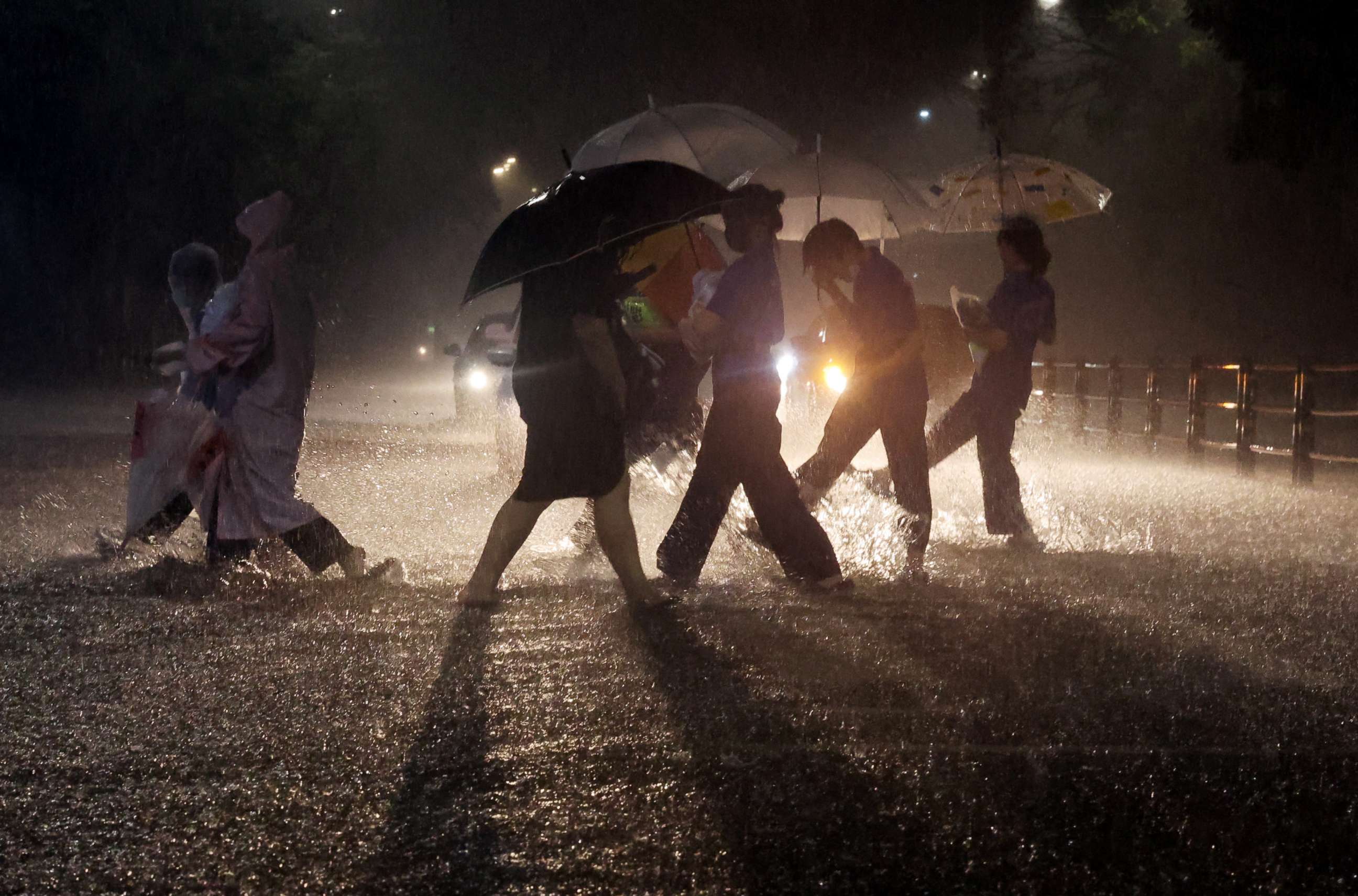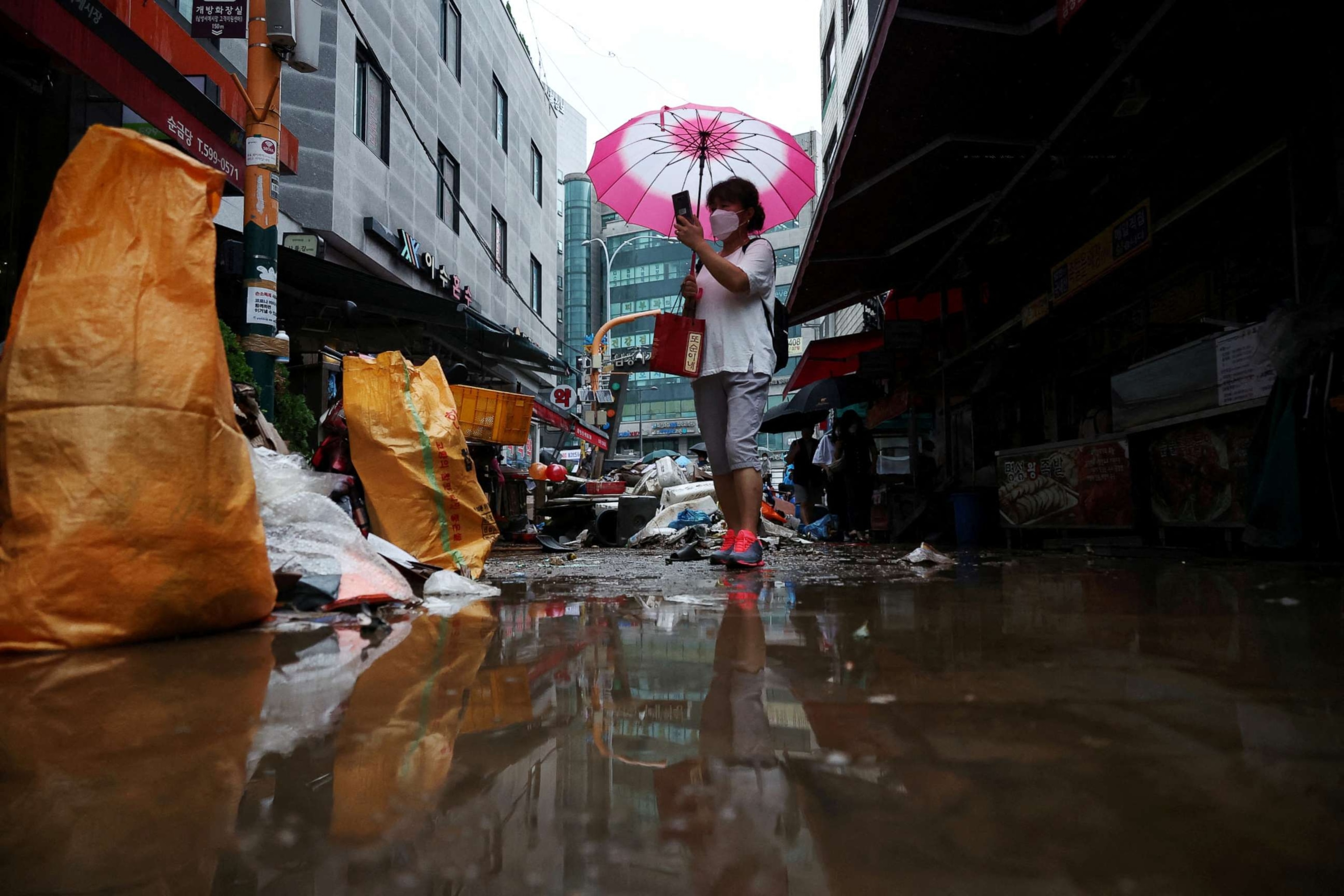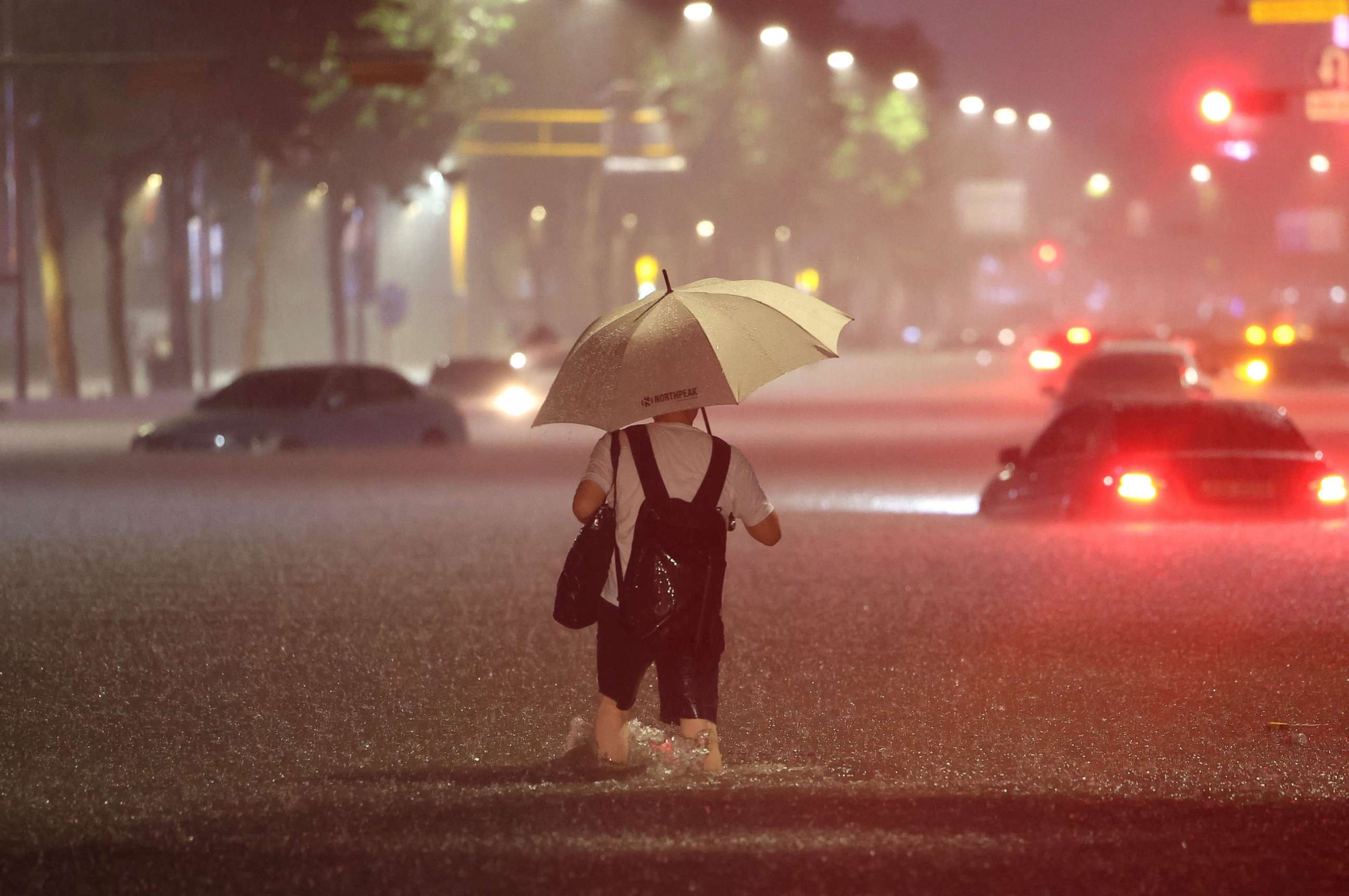Heavy rain batters South Korea, flooding Seoul neighborhoods and killing at least 9
The Meteorological Administration forecasts the rain will last until Wednesday.
SEOUL, South Korea -- Heavy rain with thunder and lightning has battered South Korea's central areas for two straight days, causing damage, injuries and deaths.
Nine people have died and six more have been reported missing in the heavy rain in the last two days, according to South Korea's Central Disaster and Safety Countermeasures Headquarters. A family of three living in a semi-basement apartment died when their home flooded, in Gwanak-gu, Seoul, officials said.
The heaviest rainfall since South Korea began tracking precipitation has flooded subway stations and submerged roads and homes.

Korea Meteorological Administration said the rainfall was a result of a strong collision between dry cold air coming from the North and hot humid air from the South.
Thousands of vehicles were submerged in Seoul on Monday night, forcing drivers to abandon their cars on the flooded road to get home. Muddy water brimmed over the river onto the streets and into the vehicles. Public sewers overflowed, not being able to hold the amount of rain that poured fast and hard.

"It rained 140 millimeters (5.5 inches) Monday night in the Dongjak district, Seoul, in just one hour. Seoul city's annual precipitation is 1,400 millimeters (55 inches), which means that in just one hour, one-tenth of Seoul city's yearly rainfall poured in just one part of the city in a very short period," Lee Young-joo, professor of fire prevention science at the University of Seoul, told ABC News.
Initially, the agency said 10 had died, but later confirmed one death was due to illness, not the flooding.
Hundreds of people living in mountainous areas in Seoul were evacuated to prevent damage from landslides Monday night. Civil service workers relocated residents living in lower-level homes and near mountains to temporary shelters. The heavy rain that poured after 6 p.m. Monday was especially harsh on people commuting from work to their homes.
"When I got off work, water was up to my knees and children were struggling to wade through the flooded water," Seoul citizen Dong-Ug Yoon told ABC News about his difficult commute home. "The subway station was full of dirt. The shopkeeper of the underground convenience store was visibly emotional, trying to hold off the water gushing from the station stairs into her store."

Gangnam district, well known for its posh streets and office buildings, was hit aggressively by the rain due to its topographical traits. The Gangnam subway station area is known to be 30 feet lower than the neighboring subway stations, making it more vulnerable to heavy rain and flood.
"Cars and buses were submerged in the flood so I had to park my car on a relatively safe side of the road and walk home. It took almost two hours trying to find roads that weren't underwater yet," Yewon Lee, an organist living in Seoul, told ABC News. "When I returned early this morning, I found other vehicles that floated down and collapsed into my car."
The Seoul Metropolitan Government repaired the drainage facility in Gangnam after the area flooded from heavy rain in 2010.
Lee, the professor, said at the amount of rain that poured since Monday was way over the scale a reasonable drainage system could handle.

President Yoon Suk-yeol ordered officials during an emergency meeting Tuesday to "respond all-out with a sense of alertness." He ordered officials to put in place preemptive entry restrictions in areas prone to landslides and flooding and for swiftly communicating the measures to the public.




